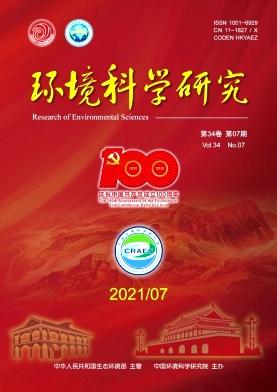Toxic effects of antimony on soil fleas (Folsomia candida)
Q2 Environmental Science
引用次数: 0
摘要
In order to understand the toxic effects of Sb (antimony) on soil invertebrates and compare the differences in Sb toxicity in different types of soil, three groups of individual level evaluation indicators, namely mortality rate, escape rate, and reproduction number, were selected to study the acute and chronic toxic effects of exogenous Sb addition on the model organism, Folsomia candida, in three typical soils (Helen black soil, Qiyang red soil, and Beijing tidal soil). The results showed that:, Based on the measured w (Sb total), the 2d-EC50 (EC50 is the half effective concentration) of Sb affecting the escape of fleas in the above three soils were 298,>431 [higher than the highest w (Sb total) in the soil] and 132 mg/kg, respectively; The 7 d-LC50 (LC50 is the median lethal concentration) that affects the death of jumping insects are 3352, 4007, and 2105 mg/kg, respectively; The 28 d-LC50 that affects the death of fleas were 2271, 1865, and 703 mg/kg, respectively, and the 28 d-EC50 that affects the reproduction of fleas was 1799, 1323, and 307 mg/kg, respectively. From the above toxicity thresholds, it can be seen that the sensitivity of flea escape rate is higher than that of mortality rate and reproduction number. There is a significant difference in the toxicity of Sb to fleas in different soils. The toxicity of Sb to fleas in Beijing Chao soil is close to six times higher than that in Helen black soil and Qiyang red soil, It indicates that different soil physicochemical properties have a significant impact on the ecotoxicity effect of Sb. However, the difference in toxicity thresholds of Sb in the above three soils obtained based on w (Sb water extraction) decreases, indicating a significant correlation between water extracted Sb and its toxicity, which can better explain the differences in Sb toxicity among different soils. The research results can provide a basis for establishing a toxicity prediction model for Sb in soil in China and formulating quality standard values for Sb本文章由计算机程序翻译,如有差异,请以英文原文为准。
锑对土壤跳虫( Folsomia candida )的毒性效应
为了解Sb(锑)对土壤无脊椎动物的毒性效应及对比不同类型土壤中Sb毒性的差异,选取死亡率、逃避率、繁殖数三组个体水平的评价指标研究了3种典型土壤(海伦黑土、祁阳红壤、北京潮土)中外源添加Sb对模式生物——跳虫(Folsomia candida)的急性毒性和慢性毒性效应.结果表明,基于实测w(Sb总)求得的上述3种土壤中Sb影响跳虫逃避的2 d-EC50(EC50为半数效应浓度)分别为298、>431[高于土壤中最高w(Sb总)]和132 mg/kg;影响跳虫死亡的7 d-LC50(LC50为半数致死浓度)分别为3 352、4 007、2 105 mg/kg;影响跳虫死亡的28 d-LC50分别为2 271、1 865、703 mg/kg,影响跳虫繁殖的28 d-EC50分别为1 799、1 323、307 mg/kg.由上述毒性阈值大小可知,跳虫逃避率的敏感性高于死亡率和繁殖数的敏感性,不同土壤中Sb对跳虫的毒性大小具有显著差异,北京潮土中Sb对跳虫的毒性与海伦黑土、祁阳红壤相比最大差别接近6倍,表明不同土壤理化性质对Sb生态毒性效应具有显著影响.但基于w(Sb水提)求得的上述3种土壤中Sb的毒性阈值差异减小,说明水提态Sb与其毒性具有显著相关性,可以较好地解释不同土壤间Sb毒性的差异.该研究结果可为建立我国土壤中Sb的毒性预测模型及制订Sb的质量标准值提供依据.
求助全文
通过发布文献求助,成功后即可免费获取论文全文。
去求助
来源期刊

环境科学研究
Environmental Science-Environmental Science (miscellaneous)
CiteScore
3.80
自引率
0.00%
发文量
6496
期刊介绍:
 求助内容:
求助内容: 应助结果提醒方式:
应助结果提醒方式:


